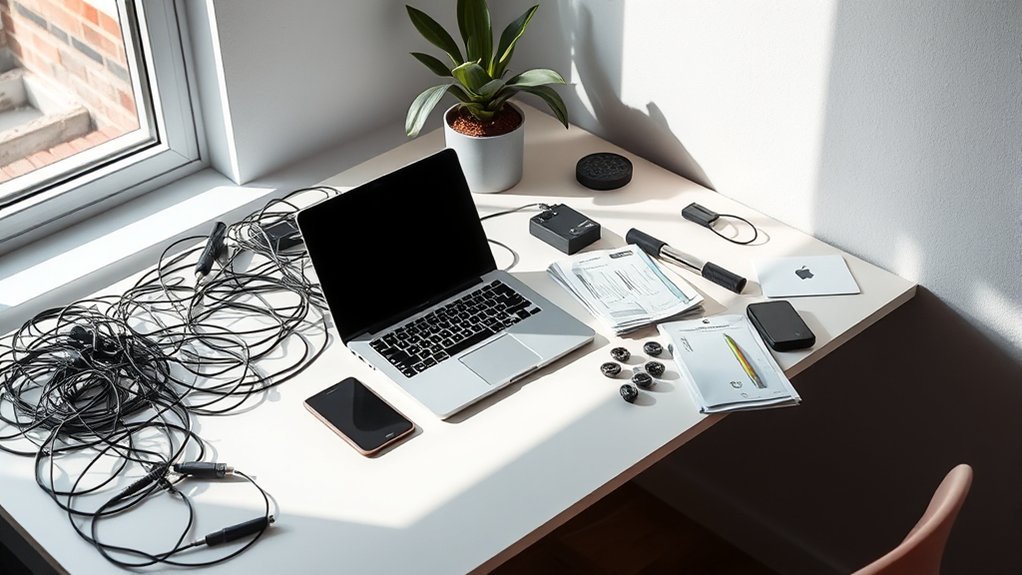When you’re setting up a new system or device, it’s essential to follow specific do’s and don’ts to guarantee everything goes smoothly. By planning and organizing your workspace, you’ll set yourself up for success. However, rushing or ignoring vital steps can lead to avoidable mistakes. Understanding these best practices can save you time and frustration. So, what are the key strategies to keep in mind for a flawless setup?
Understanding the Importance of Preparation
When you immerse yourself in any setup process, understanding the importance of preparation is essential to your success.
Preparation lays the groundwork for everything that follows, ensuring you have the right tools, resources, and mindset. By taking time to plan, you eliminate potential obstacles, allowing for a smoother execution.
It’s about envisioning the end goal and mapping out the steps to get there. Ask yourself what you need and anticipate challenges. This proactive approach not only boosts your confidence but also enhances your efficiency.
Remember, an unprepared setup often leads to frustration and wasted time. Embrace the power of preparation; it’s your ally in achieving liberation and turning your vision into reality.
Start strong, and you’ll reap the rewards.
Essential Do’s for a Successful Setup
A successful setup hinges on a few essential do’s that can make all the difference.
By focusing on these key actions, you’ll pave the way for an effective experience.
Focusing on key actions can significantly enhance your overall experience and productivity.
- Plan ahead: Outline your goals and necessary tools before diving in.
- Stay organized: Keep your workspace tidy to minimize distractions.
- Test your equipment: Verify everything works smoothly before your setup is underway.
- Seek help when needed: Don’t hesitate to ask for guidance or collaborate with others.
Embracing these do’s will empower you to create a setup that not only meets your needs but also liberates your creativity, allowing you to fully engage in the process.
Common Don’ts to Avoid During Setup
While focusing on what to do during your setup, it’s equally important to recognize what to avoid. First, don’t rush the process. Taking your time guarantees everything’s in place, reducing the chance of errors.
Next, avoid skipping steps in the setup guide; every detail matters. Don’t overlook the importance of a clean workspace—clutter can lead to distractions and mistakes.
Also, steer clear of ignoring compatibility issues between devices; mismatched tech can cause frustrating delays.
Finally, don’t hesitate to ask for help if you’re stuck; collaboration can lead to better solutions and a smoother setup.
Embracing these don’ts will empower you to create a more efficient and enjoyable setup experience.
Troubleshooting Tips for Setup Challenges
If you encounter challenges during your setup, don’t panic—troubleshooting can often resolve most issues. Here are some tips to help you get back on track:
- Check connections: Confirm all cables and devices are securely plugged in.
- Restart your devices: A simple reboot can fix many unexpected glitches.
- Refer to manuals: Don’t overlook user manuals; they often contain crucial troubleshooting steps.
- Seek online forums: Communities can offer quick solutions based on similar experiences.
Embrace these methods to tackle issues confidently.
Best Practices for Ongoing Maintenance and Updates
To keep your setup running smoothly, it’s essential to prioritize ongoing maintenance and regular updates. Start by scheduling routine checks to identify potential issues before they escalate.
Regularly back up your data to avoid loss and guarantee you can recover easily from any mishap. Keep your software up to date; updates often include security patches and performance enhancements that liberate your system from vulnerabilities.
Monitor system performance and user feedback to adapt your setup as needed. Finally, document any changes you make, so you’ve got a clear history to reference.
Frequently Asked Questions
How Long Does a Typical Setup Process Take?
A typical setup process usually takes between 30 minutes to an hour. It depends on the complexity of what you’re setting up, but you can streamline things by following straightforward steps and staying organized.
Can I Set up Multiple Devices Simultaneously?
Sure, you can set up several setups simultaneously! Just guarantee each device’s distinct details don’t disrupt the process. Keep connections clear, and you’ll conquer the configuration chaos without complications. Enjoy your liberated tech journey!
What Tools Are Necessary for a Successful Setup?
You’ll need a reliable internet connection, compatible cables, and power adapters for each device. Also, consider having a user manual handy, as well as any necessary software or apps installed for peak performance.
Is Professional Help Recommended for Complex Setups?
If you’re building a complex Lego tower, you’d call an expert to avoid a collapse, right? Similarly, getting professional help for intricate setups can save time and frustration, ensuring everything runs smoothly from the start.
What Are Common Setup Myths to Debunk?
Many believe you need expert skills for every setup, or that expensive gear guarantees success. In reality, simple tools and creativity often yield the best results, so don’t let myths limit your potential.
Conclusion
To summarize, following the do’s and don’ts can make your setup process smooth and efficient. For instance, imagine you’ve organized your workspace and tested your equipment beforehand, only to realize your software isn’t compatible. Instead of rushing to fix it, you use the time to research alternatives and avoid future headaches. By planning ahead and staying focused, you guarantee a successful setup, paving the way for a seamless experience down the line.
